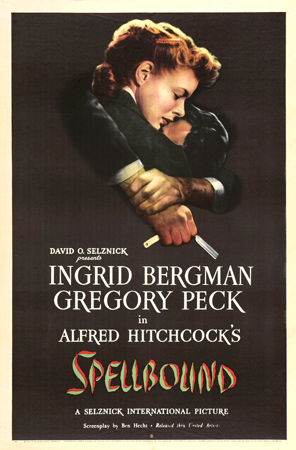1001 films you must see before you die- Part V: 1945-1949
JM-Inglés :: English World :: The best
Página 1 de 2.
Página 1 de 2. • 1, 2 
 1001 films you must see before you die- Part V: 1945-1949
1001 films you must see before you die- Part V: 1945-1949
1001 films you must see before you die
Part V: 1945-1949
174
The battle of San Pietro (John Huston, 1945)
Part V: 1945-1949
174
The battle of San Pietro (John Huston, 1945)

The Battle of San Pietro is a 1945 documentary film directed by John Huston about the Battle of San Pietro Infine during World War II.
The film is unflinching in its realism (showing people dying on the field) and was held up from being shown to the public by the United States Army. Huston quickly became unpopular with the Army, not only for the film but also for his response to the accusation that the film was anti-war. Huston responded that if he ever made a pro-war film, he should be shot.
General George Marshall came to the film's defense, stating that because of the film's gritty realism, it would make a good training film; subsequently the film was used for that purpose. Huston was no longer considered a pariah; he was decorated and made an honorary major.
Watch The Battle of San Pietro (1945) in Entertainment Videos | View More Free Videos Online at Veoh.com
Última edición por JM el Sáb Oct 24, 2009 10:12 pm, editado 2 veces

JM- Cantidad de envíos : 1948
Fecha de inscripción : 01/09/2008
 Re: 1001 films you must see before you die- Part V: 1945-1949
Re: 1001 films you must see before you die- Part V: 1945-1949
175
Spellbound (Alfred Hitchcock, 1945)
Spellbound (Alfred Hitchcock, 1945)

Alfred Hitchcock takes on Sigmund Freud in this thriller in which psychologist Ingrid Bergman tries to solve a murder by unlocking the clues hidden in the mind of amnesiac suspect Gregory Peck. Among the highlights is a bizarre dream sequence seemingly designed by Salvador Dali--complete with huge eyeballs and pointy scissors. Although the film is in black and white, the original release contained one subliminal blood-red frame, appearing when a gun pointed directly at the camera goes off. Spellbound is one of Hitchcock's strangest and most atmospheric films, providing the director with plenty of opportunities to explore what he called "pure cinema"--i.e., the power of pure visual associations. Miklós Rózsa's haunting score (which features a creepy theremin) won an Oscar, and the movie was nominated for best picture, director, supporting actor (Michael Chekhov), cinematography, and special visual effects.

» 1º Bachillerato 2020- UNIT 4
» 1º Bachillerato 2020- UNIT 6
» 4ESO- 2020- UNIT 9
» The Michael Zager Band - Let's All Chant
» Voz pasiva: Ejercicios
» Oraciones condicionales Tipo I + Ejercicios
» Comparativos y superlativos: Ejercicios
» Present Perfect: Ejercicios